UPDATED - Sigma dp2 Quattro First Shots posted - adding a raw conversion to the mix
posted Saturday, July 12, 2014 at 5:44 PM EDT
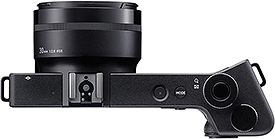
[Update: We've added an example of an image processed through Sigma Photo Pro, showing dramatically improved rendering of the red fabric swatch in our Still Life target. You'll also find a link to the full-res raw-converted file below.]
The Sigma dp2 Quattro has arrived! What has to be one of the most anticipated cameras of the year arrived in our lab Friday, and we've now posted our first round of test images.
Sigma's dp Quattro line (eventually three models, with differing fixed-lens focal lengths) represents a radical change from previous models, not just in terms of its outer appearance, but internally as well, sporting a brand-new image sensor that also represents a radically different approach to how a camera collects light. Anyone interested in this camera who has yet to read our Sigma dp2 Quattro First Impressions report will want to be sure to take a look there, as our senior editor Mike Tomkins did a terrific job explaining the basics of this new sensor design.
For everyone else, dive into our Sigma dp2 Quattro review's First Shots samples page, to see the initial Still Life test images up close and personal. Note that there are two sets of shots available there: those labeled with "H" represent Fine JPEG compression and the camera's standard "High" resolution of 20M (5424 x 3616), while those with "SH" in their filenames represent the DP2's "Super High" image size setting of 39M (7680 x 5120). The "High" resolution versions correspond to the camera's native resolution, with a 1:1 mapping between sensor pixels as defined by the imager's "blue" layer, while the Super High setting involves a 2x (1.416x linear) interpolation. The 2x interpolation results in the number of pixel locations that Foveon (the chip's maker) considers the Quattro chip to be equivalent to, when compared with a conventional Bayer-striped sensor. We've chosen to show the uninterpolated images in the Comparometer and the crops below, but corresponding Super High resolution versions are also available on the dp2 Quattro's samples page.
For those of you looking to make your own on-screen comparisons, head over to our Comparometer to pit the Sigma dp2 Quattro against any camera we've ever tested, across the ISO spectrum. (And as always, note that you're welcome to download our images for personal use, to see how printed output from different cameras compares, using your own printer and software settings.)
Below are a couple of crop comparisons, showing images from the dp2 Quattro (standard "High" image size) next to matching ones from the DP1 Merrill at ISO 100. (The DP1 has a wider focal length lens than the dp2 Quattro, but the two shots are framed as identically as we could manage. There'll be some perspective differences, but any size differences are just the result of the two cameras' different resolutions. We unfortunately don't have test shots to share from the DP2 Merrill, which had a similar lens focal length to that of the dp2 Quattro.)
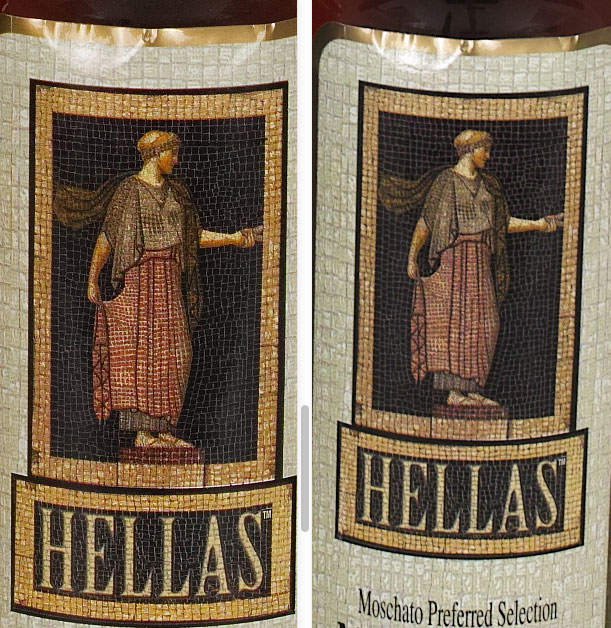
As you might expect, the dp2 Quattro shows quite a bit more fine detail, but what strikes us here is not just that there's more fine detail, but how crisp the Quattro's image is. Although neither camera has a low-pass filter, the dp2 Quattro's edges are much more crisp-looking than those in the earlier Merrill model.
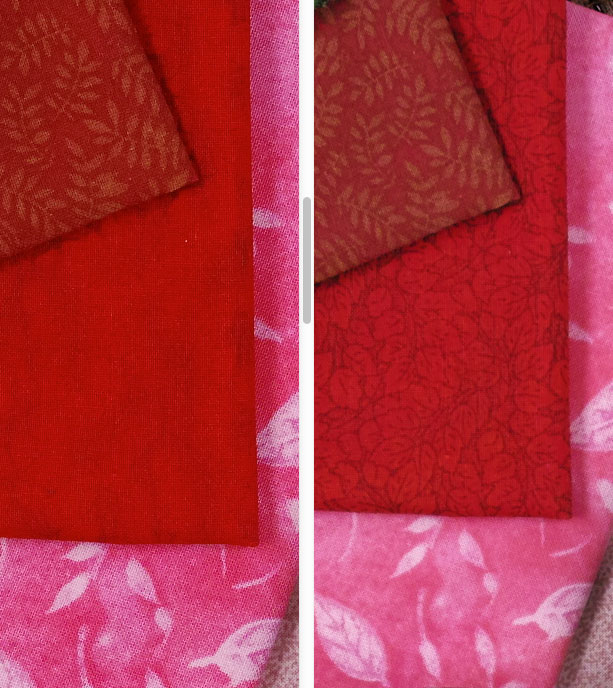
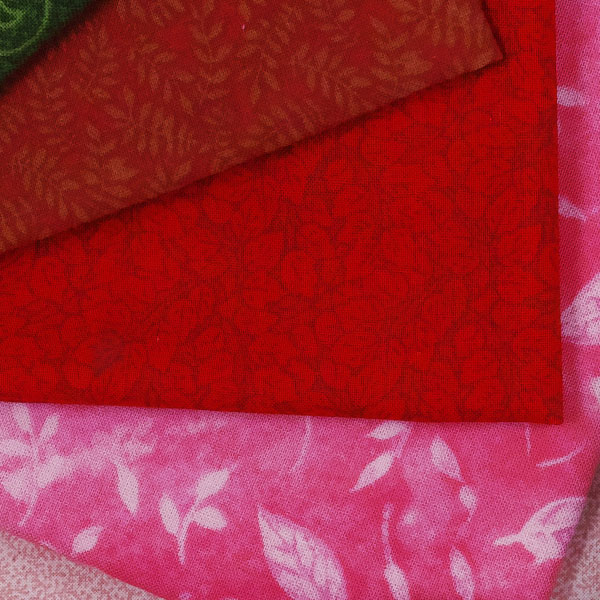
Astute reader jlthirot grabbed one of our RAW image files and ran it through the latest edition of Sigma's RAW file converter Sigma Photo Pro, then uploaded a crop into the comments thread below. The results were so dramatically different that we went ahead and downloaded the latest version, converted the ISO 100 image (all controls set to auto/defaults), and uploaded it to the site, so everyone could see the full-sized image. The lack of a low-pass filter shows in the crop above as some cross-hatched artifacts, likely the result of a moiré effect between the camera's pixel pitch and the threads of the fabric swatch. Nonetheless, the level of detail is impressive, and vastly different from what the camera produces internally. The rest of the rendering was also a bit better, with more natural sharpening, but the differences there aren't remotely on the same order as with the red fabric. (Thanks jlthirot, for taking time to do the conversion and share it with us and other readers!)
Here are crops of a finely detailed area of our test target, comparing the dp2 Quattro with the Nikon D800E. [Note: In order to compare at similar viewing sizes, the D800E has been downsampled a bit here. - And yes, we probably could have either upsampled or downsampled one of the cameras in the comparison with the DP1 Merrill above, but the dp2 Quattro's resolution advantages over the DP1 Merrill in that case were abundantly clear, without resizing anything.]
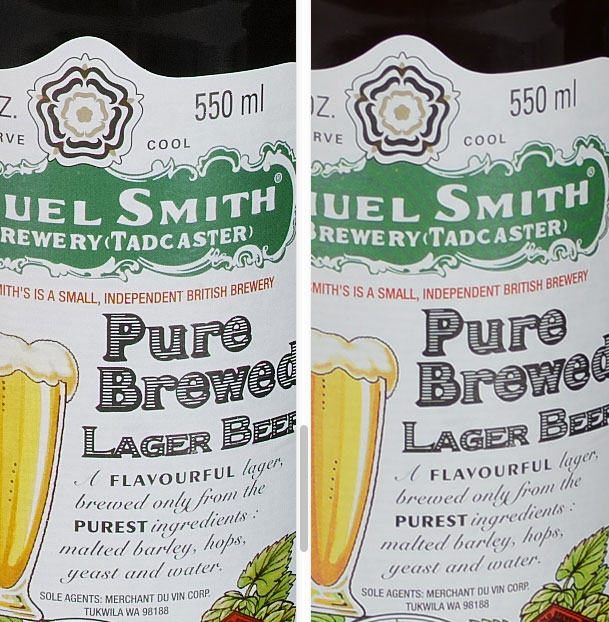
Three things are evident here: 1) The dp2 Quattro has oodles of resolution, and remarkably crisp edges. 2) Even a very high-resolution camera like the D800E can produce moiré artifacts when the subject contains repeating patterns. (Note the moiré patterns in the green background behind the Samuel Smith lettering - that's a moiré caused by the high-frequency detail of the printed label's halftone dots. 3) The dp2 Quattro's images can sometimes look a little stark, with very high local contrast, as seen in the "Pure Brewed" lettering here. It looks like some of that might be down to slightly aggressive sharpening in-camera, check out the image converted via Sigma Photo Pro to see its more natural handling of this detail.
We'll soon be sending the Sigma dp2 Quattro to one of our top reviewers, Eamon Hickey, so stay tuned for much more to come as the dp2 tours the streets of New York City. We should also have a full complement of our lab-based test images available for you to look at sometime early next week.
Sigma deserves a lot of credit for the out-of-the-box thinking embodied in the Foveon sensors used in their cameras. Conventional sensor technology does hold an edge when it comes to high-ISO performance (although the dp2 Quattro provides at least a full f-stop of improvement in that area, relative to earlier models). When it comes to sheer resolution and freedom from color artifacts and moiré problems, though, the Sigma dp2 Quattro is really in a class of its own. Paired with an exceptionally good, purpose-designed fixed prime lens, there's nothing in the dp2 Quattro's price range that can remotely compete with it on a resolution-per-dollar basis.
Stay tuned for more test shots and hopefully a first shooter's report installment, coming soon!
[Co-written with IR Publisher Dave Etchells, including all comparison commentary]
[quick links: Sigma dp2 Quattro • Sample Images • Comparometer]
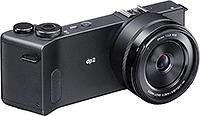
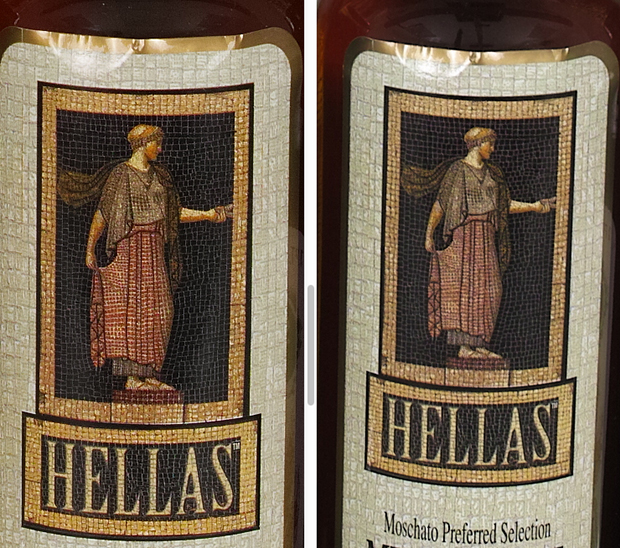
As you might expect, the dp2 Quattro shows quite a bit more fine detail, but what strikes us here is not just that there's more fine detail, but how crisp the Quattro's image is. Although neither camera has a low-pass filter, the dp2 Quattro's edges are much more crisp than those in the earlier Merrill model.
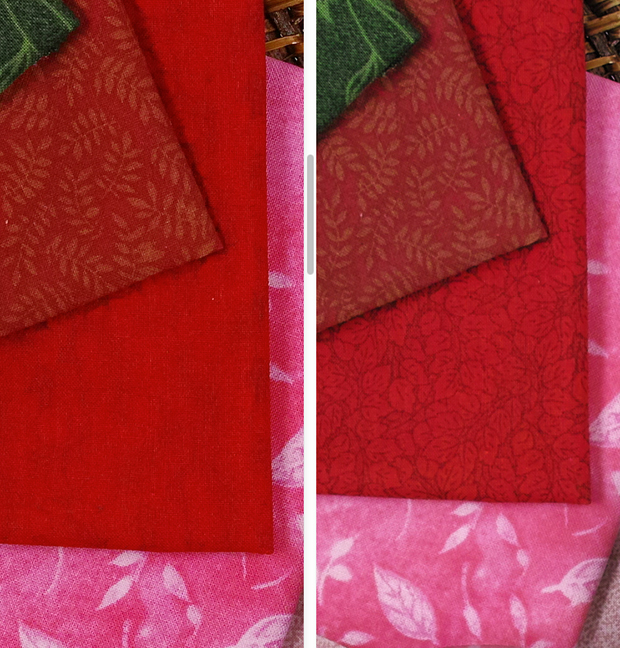
Again, the dp2 Quattro shows dramatically more detail in the fabric threads, but its color management and RGB-separation algorithms have a hard time with our highly-saturated red swatch, that's such a bugaboo for so many cameras. We've been told that this color is at the edge of or beyond the gamut of the sRGB color system, which explains why so many cameras have difficulty with it, especially as noise reduction kicks in at high ISOs. That said, though, we've never seen this amount of detail loss at base ISO. (Interestingly, the DP1 Merrill handled it exceptionally well, compared to not only the dp2 Quattro, but most cameras from other manufacturers as well.) The Quattro shows dramatically more detail than the Merrill model on the other fabric samples, but its difficulty with the deep red swatch bears noting.
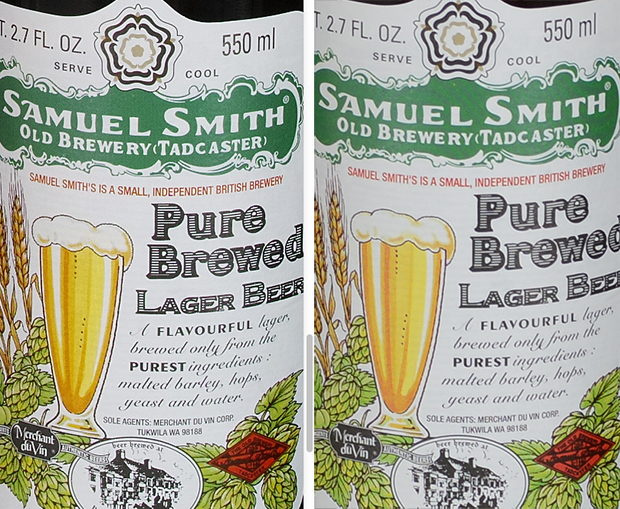
Three things are evident here: 1) The dp2 Quattro has oodles of resolution, and remarkably crisp edges. 2) Even a very high-resolution camera like the D800E can produce moiré artifacts when the subject contains repeating patterns. (Note the moiré patterns in the green background behind the Samuel Smith lettering - that's a moiré caused by the high-frequency detail of the printed label's halftone dots. 3) The dp2 Quattro's images can sometimes look a little stark, with very high local contrast, as seen in the "Pure Brewed" lettering here. It looks like some of that might be down to slightly aggressive sharpening in-camera, it'll be interesting to see at some point what RAW file conversions look like, with no sharpening applied. While we accept the argument that the dp2's images contain the same amount of overall image information as do those from conventional Bayer-striped arrays having twice the number of photosites, the fact that there are "only" 20 million discrete light-sensing areas in the dp2 Quattro's sensor design means that it can produce more luminance aliasing than might a 2x higher-resolution Bayer array. This can be seen here most easily in the form of increased jaggies in some of the fine lines in the Pure Brewed lettering. This is probably only evident with the sort of manmade, repeating details shown here, though. Stay tuned, we're working to bring you some "real world" comparisons against a high-resolution conventional sensor-equipped camera soon...